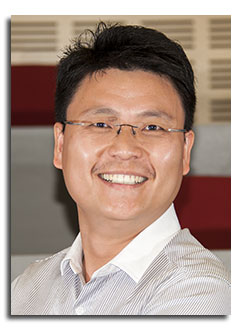
Abstract
This seminar concerns the optimisation and application of silicon nitride (SiNx) films for silicon solar cells. Systematic and comprehensive studies of SiNx properties are undertaken to advance (i) the technology of SiNx synthesised by plasma enhanced chemical vapour deposition (PECVD), and (ii) the understanding of recombination at SiNx-passivated silicon surfaces. The examination on the film properties of SiNx prepared by a microwave/radio-frequency dual-mode PECVD reactor (R&R AK400) showed that there is no universal correlation between surface recombination and (i) bulk structural properties such as chemical bond densities, and (ii) bulk optical properties such as refractive index and extinction coefficient. Results of this study repudiate the common perception that surface recombination decreases as SiNx becomes Si-rich. We attained a low and relatively constant surface recombination over a wide range of SiNx refractive indices. Notably, the behaviour was observed on several types of silicon surface surfaces-planar, textured, p-type, n-type, diffused and undiffused-with direct relevance to most silicon solar cell structures. The results demonstrate that the trade-off between the optical transmission and surface recombination is circumvented. In specific, we attained a highly transmitting and highly passivating SiNx film. The value of this film was demonstrated on an n-type interdigitated back contact solar cell with no front surface diffusion, which makes the cell highly susceptible to the front surface passivation. On such a cell, the optimum SiNx developed in this thesis enables a conversion efficiency of 24.4 plus or minus 0.5% under standard testing conditions (25C, AM1.5G spectrum).
Click here to see all available video seminars.
Click here to go to the SPREE HOMEPAGE.
Brief Bio
Dr Yimao Wan received his B.E. degree from the Nanyang Technological University (NTU), Singapore in 2004. From 2004 to 2007, he was with STMicroelectronics, Singapore; and from 2007 to 2010, he was with Peregrine Semiconductor, Sydney, Australia. In both he was a process engineer in semiconductor manufacturing industry. In 2010 he returned to university, completing a PhD in Photovoltaic Engineering at the Australian National University (ANU), Canberra, Australia. His PhD focused on the characterisation and optimisation of silicon nitride layers for silicon solar cells. Since 2014 he has been a research fellow at ANU where he manages several industrial projects. Dr Wan conducts research into industry-feasible advanced silicon solar cells with a specific focus on surface and contact passivation.
